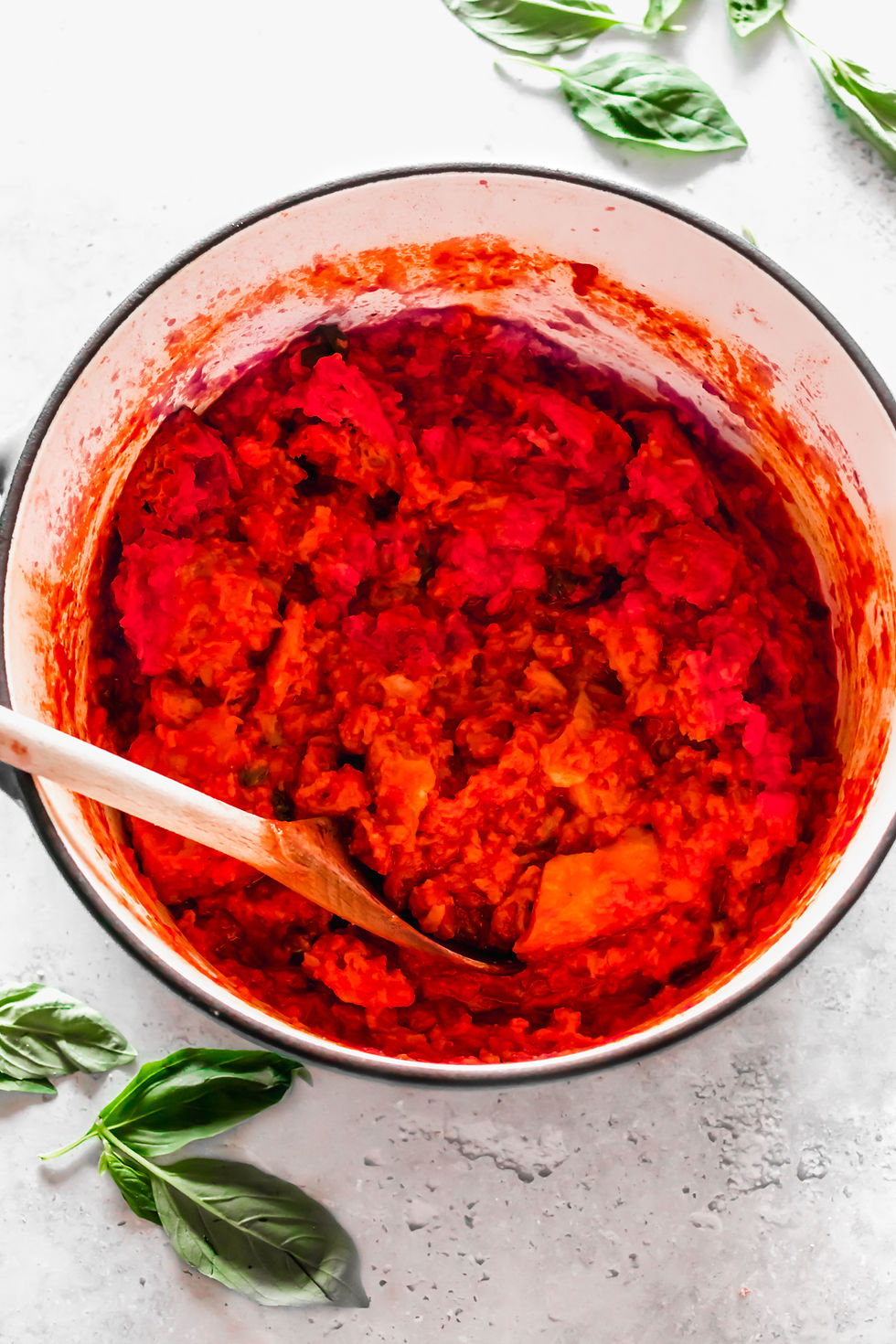Pappa al Pomodoro
- valeriapinasco96
- Sep 7
- 4 min read
Updated: Nov 23
With only five ingredients, this Tuscan soup is comfort in a bowl! Thick, delicious and oh-so-easy to make, it's the perfect weeknight dinner for the colder months.

For the past few months, I have been reflecting a lot about Italian food - aka my homeland's food - and just how mindboggingly diverse it can be. Most dishes are tied to specific regions, or even cities, and hardly make it to the rest of Italy, creating a very unique culinary landscape, that goes all the way back to when Italy was not a country but a collection of individual city states. While, of course, some dishes made it out to the rest of Italy and indeed the world (think carbonara, pesto & tiramisu just to name a few), the number of the dishes which have not is staggering: some surveys count over 5.000 regional dishes - insane when compared to the amound of regional dishes in other European countries!
It was this re-discovery and desire to explore traditional Italian recipes after 10 years in the UK, that made me want to embark on a virtual food journey, where every few weeks I re-create some regional classics, some more famous, some less so, in an attempt to share them with a wider, international audience. And today, we're going to Tuscany!
Tuscan food is particularly meat heavy, from a variety of steaks to gorgeous charcuterie platters, however, there are a few vegetarian dishes that I find most comforting. One is Ribollita, a bean and veg stew, and then of course Pappa al Pomodoro, which we'll make today. Made with only 5 ingredients (if you don't coun't olive oil and salt), this dish best represents the essence of Italian cusine - 'cucina povera' meaning poor people's food. With some noteworthy exceptions, most of the traditional food consumed in Italy is just that: simple, unfussy food that really showcases the quality of the ingredients.

How to make the best Pappa al Pomodoro:
Flavour your oil: traditionally, you start things off with a good amount of olive oil and a whole clove of garlic, which will flavour the oil. Once the clove turns golden brown and soft, it's time to remove it, as it's done its job. Not to worry though: you can keep it in if you fancy, I won't judge.
In go the tomatoes: here it's really up to you. Some people use whole canned tomatoes and squash them down with a fork, others go with chopped tomatoes, and some others go with passata. I used passata because I prefer the overall texture of the dish you get from it.
Fresh basil to amp up the flavour: in true Italian fashion, use basil to add depth of flavour.
The star ofthe show - bread: traditionally, you should use stale Tuscan bread (which is made without salt). I didn't have any stale bread (let alone Tuscan bread) so I toasted some sourdough and it worked out perfectly. You'll cut it into 3cm chunks or so, and toss in veg stock to soak up all the liquid. You'll then add it to the pan and let the magic unfold.
Final step - toppings: after a few mins, the bread will easily break up and mix with the sauce, until you get a very thick texture. Spoon it onto bowls, then drizzle with a generous glug of olive oil, a pinch of salt if neeed and a couple extra basil leaves, for garnish.

Ingredients (serves 3 as a main, 4 as a starter)
500g passata (or canned tomatoes)
300g stale sourdough bread (or toasted)
1 whole garlic clove
1 veg stock cube
450ml boiling water
A bunch of fresh basil
Method:
Heat a medium cast iron saucepan (or any lidded saucepan) on medium heat, then add 3-4 tbsp olive oil. Once the oil is hot, add a whole garlic clove to the pan, slightly lower the heat and keep tossing the garlic in the pan for a couple mins. The garlic will be golden brown and slightly soft. Remove the garlic clove from the pan and discard.
Add the passata or canned tomatoes to the saucepan, along with three-quarters of the freshly torn basil. Add a generous pinch of salt, and stir to combine. Bring the sauce to a boil, lower the heat, cover with a lid and let simmer for 10 mins.
Meanwhile, crumble the stock cube into 450ml boiling water and stir to combine. Break up the bread into chunks (around 3-4cm big), then add them to a bowl and cover them in the stock mixture. Mix with a spoon to coat and set aside until the bread has absorbed all the liquid.
After 10 mins, add the soaked bread to the sauce and mix to combine. Add water as needed (I added another 125ml), cover again with the lid and cook for another 5-8 mins. Break up any larger or crustier bread chunks with a wooden spoon until you get a thick homogenous texture. Then taste and add salt if needed.
Serve the Pappa al Pomodoro into bowls. Drizzle over a little olive oil and garnish with a couple basil leaves each.
Although Pappa al Pomodoro is best enjoyed immediately, it can keep in the fridge for a couple days. Just add more water to it when you reheat it, as the texture hardens the longer you keep it in the fridge for.




Comments